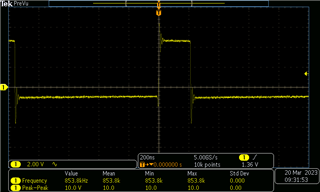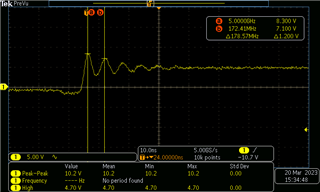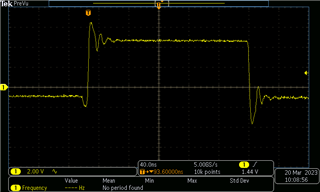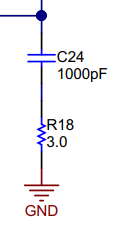Hi team,
I am using TPS543B20RVFT in my design with the below configuration.
Vin=5V
Vout=0.84V
Iout=25A
I observe voltage overshoot and undershoot at the switching output pin of the regulator.
I have attached a snapshot of the circuit design and probed waveforms. The waveforms are measured when no Snubber circuit is mounted. C433 and R377.
Please provide your suggestions on the same.




 . Please suggest some snubber values.
. Please suggest some snubber values.